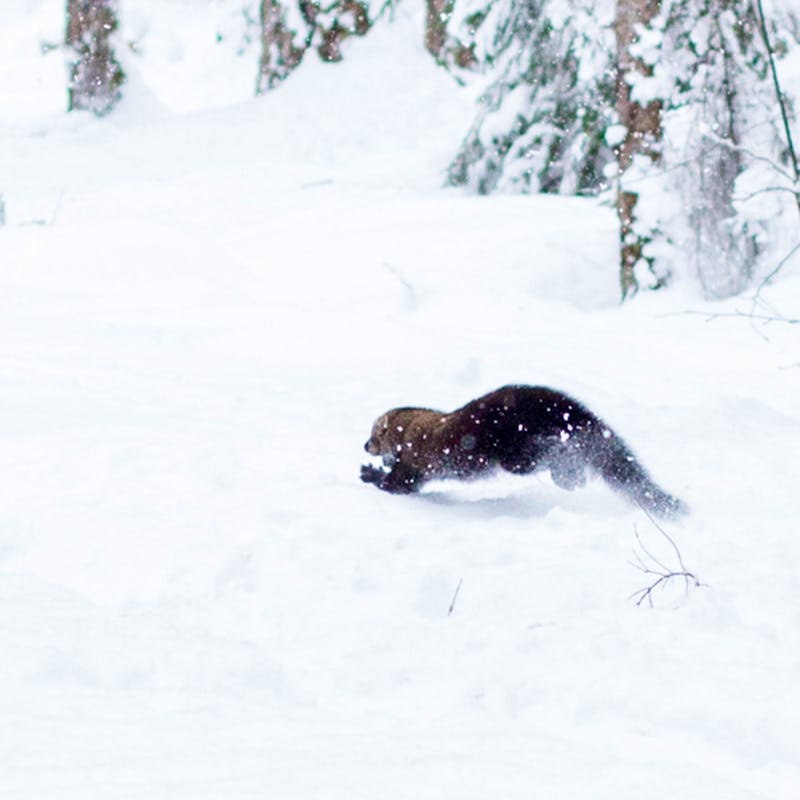“South of the border, down Mexico way…” American cultural icons like Patsy Cline and Georgia O’Keefe were well attuned to the unique and even mystical allure of the US southwest and the region’s extension into neighboring Mexico. Cline crooned homages to Santa Fe, San Jose, and “old Spanish lace,” while O’Keefe painted the wild landscapes and burning colors of the desert. Like these women, most who have spent any time in the southwest and the borderlands will tell you that much of that allure comes from the myriad wildlife that shares the region’s inimitable landscape.

The borderlands are known for spectacular wildlife and natural vistas, like this one in the Coronado National Forest.
The sights of javelina families and pronghorn herds, the howls of Mexican gray wolves and growls of jaguars and ocelots, the colorful feathers of thick-billed parrots, the strong shelled backs of large tortoises are just a few of the treasures one might encounter when taking a trip to the borderlands. Unfortunately, these lands, and the many species of imperiled and endangered wildlife that occupy and define the native systems, are being put at risk by many threats, including destructive mining operations, poorly placed energy transmission lines, and, most significantly, one very long, very steel structure. According to a recent study, one of the largest looming – and largely pointless – threats to wildlife in the southwest is the border wall.
While theoretically it is in place to control human crossing of the U.S.-Mexican border, the border wall actually does more to keep wildlife – not humans – from crossing between different areas of their habitat and accessing and connecting with different populations.
In fact, the new study, Conservation on International Boundaries: The Impact of Security Barriers on Selected Terrestrial Mammals in Four Protected Areas in Arizona, USA, showed that the intermittent fencing affects some native species, but does not necessarily restrict the movement of humans. Or in other words, animals can’t get over or around the wall, but people still can.
Maintaining connecting habitats is important for any species, but especially so for those with populations struggling to survive in the face of multiple threats. For some species, the corridors – or regularly traveled paths through the landscape – that they have relied on for centuries are now completely blocked by the wall. Without having access to different segments of their already-limited population, and without being able to reach critical remaining areas of habitat, it becomes even more difficult for these threatened species to feed, reproduce, remain healthy and contribute to the landscape that they are part of.

A family of javelina trapped at the border fence that cuts across their habitat.
To study these kinds of direct impacts of the wall, wildlife biologists and zoologists used cameras in areas throughout the border region known to be high priority habitat for migrating wildlife – like the Coronado National Forest and Coronado National Memorial – and tracked the movements of 17 different mammal species, including humans. The results? Well, pictures don’t lie. In fact, they supported previous studies that showed large, permanent barriers like the border wall complicate and in some cases completely restrict the movement of both small and large mammals. As a result they can become isolated which makes them vulnerable to extreme events such as fire and flooding and can possibly lead to extinction. Furthermore, large carnivores, which rely heavily on interactions with each other and their prey, may be particularly vulnerable to these threats.
And for some of the mammals that were not apparently directly affected, the study also showed that even those species may be indirectly impacted in the long term. Because of the influence large carnivores have in a given ecosystem (mostly through their feeding habits), messing with one part of the food chain messes with all of the other links.

Jaguars are one of many species that depend on the Coronado for its unique habitat, and can be impacted by the border wall.
Conversely, while the study proved that many wildlife species are both directly and indirectly impacted by the wall, “…human activity did not appear to be affected… These results are supported by other research, which shows that international boundary security infrastructure has little or no effect on… international boundary crossings.” And part of this has to do with “the factors that drive US-Mexico migration, which are strong enough to overcome static prevention measures” – like a steel wall. It’s just as Janet Napolitano said several years ago; “show me a 50-foot wall, and I’ll show you a 51-foot ladder.” Unfortunately, very few wildlife species have access to ladders.
So, with all of the obstacles to survival that imperiled species must already try to overcome, from climate change to population loss and everything in between, there is no reason that we should be placing more unnecessary hurdles in their way. If we want to preserve the southwest that Patsy Cline and Georgia O’Keefe knew, we must think critically about how our actions affect the native wildlife and about what we can do to minimize negative impacts on the animals that make such lands the special places they are.
Courtney Sexton is a Communications Associate at Defenders of Wildlife.
From the Blog







Follow Defenders of Wildlife
facebook twitter instagram youtube tiktok threads